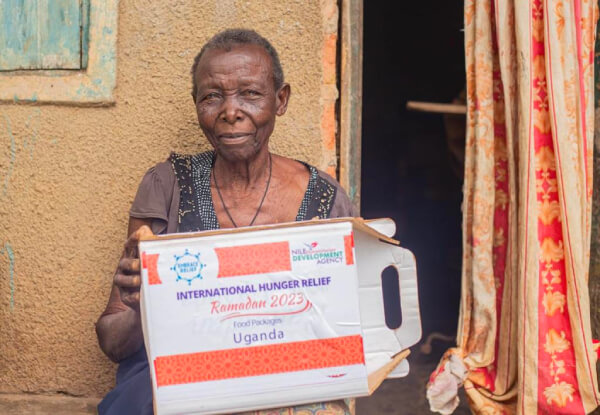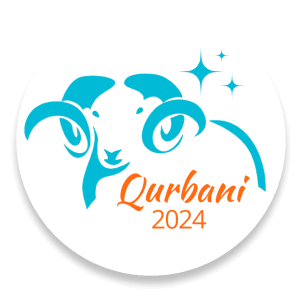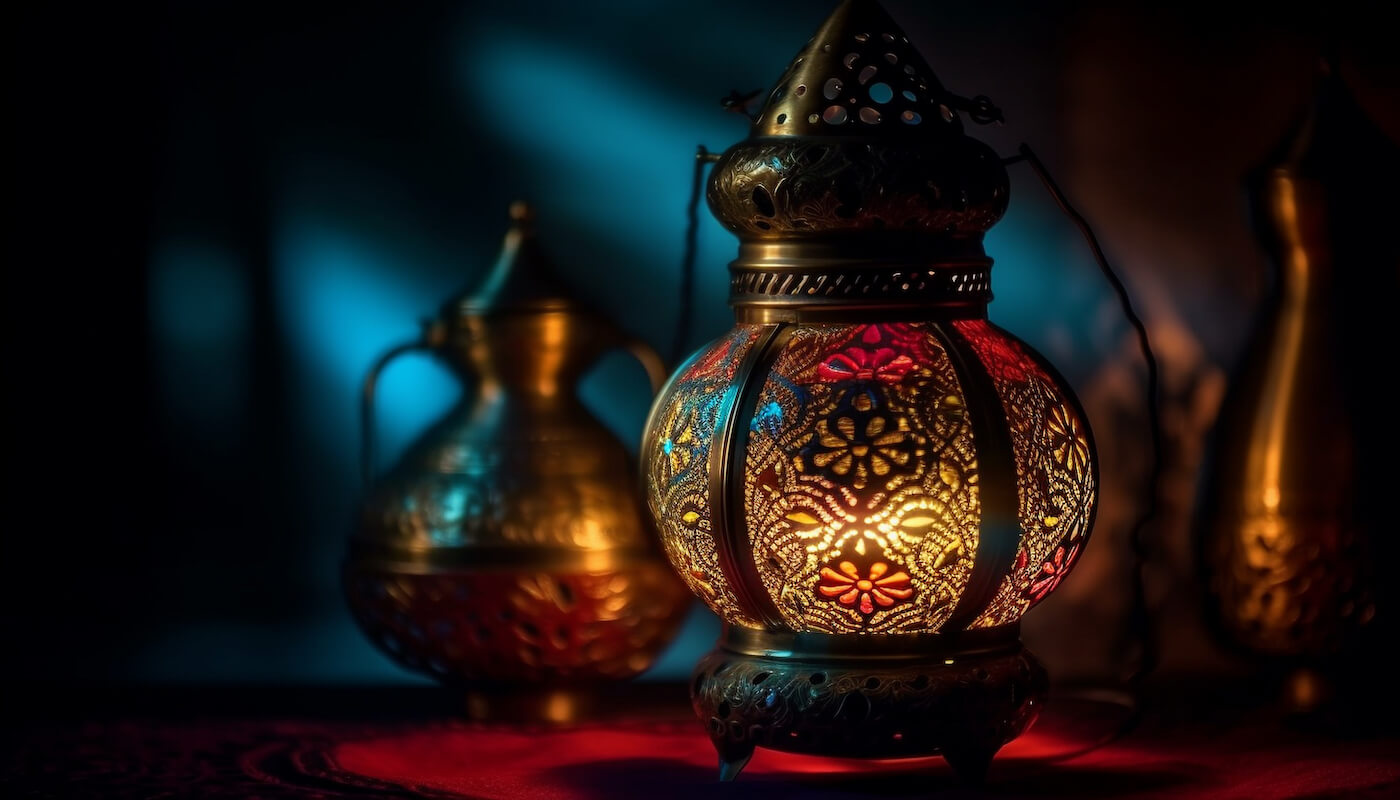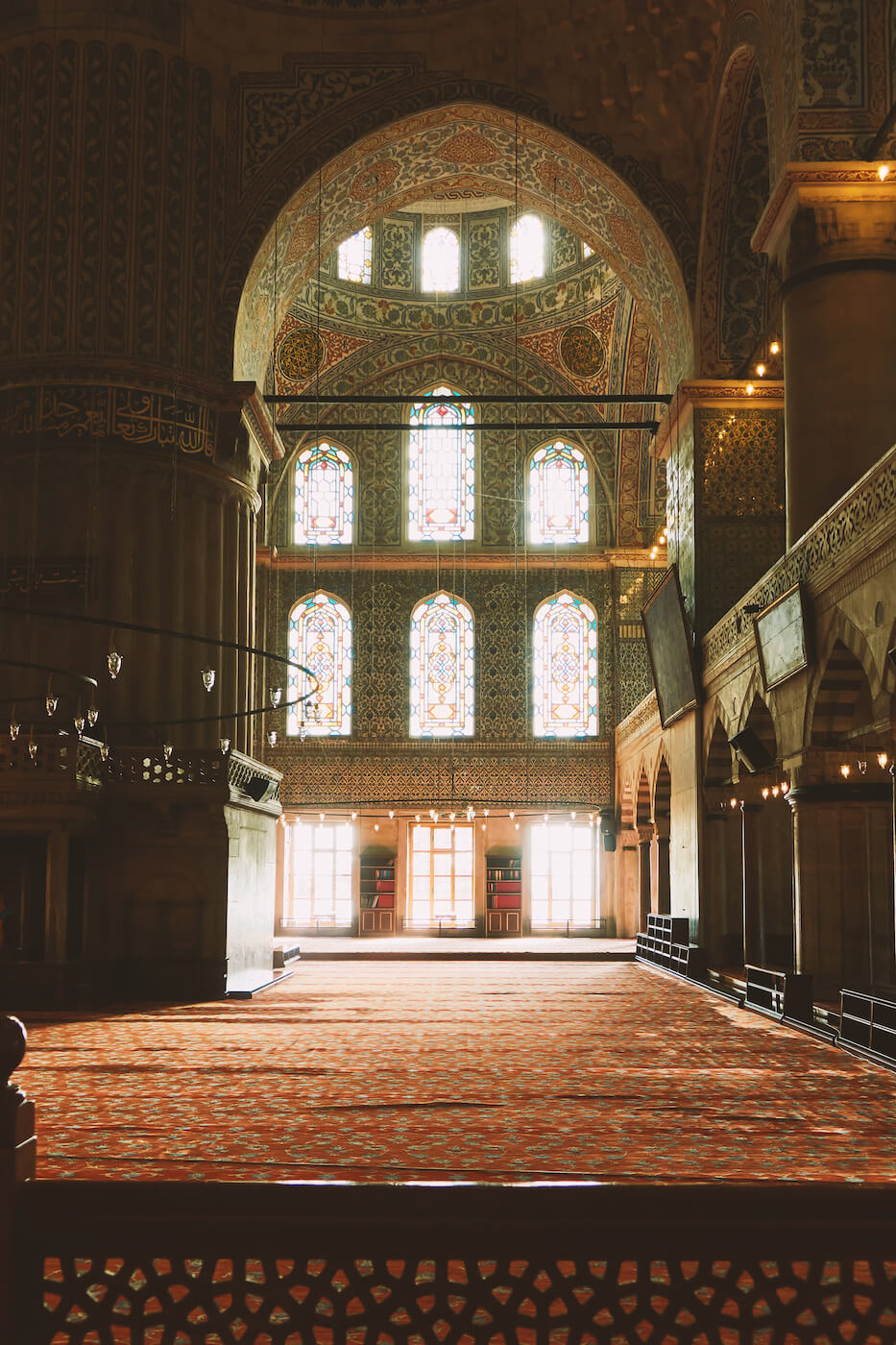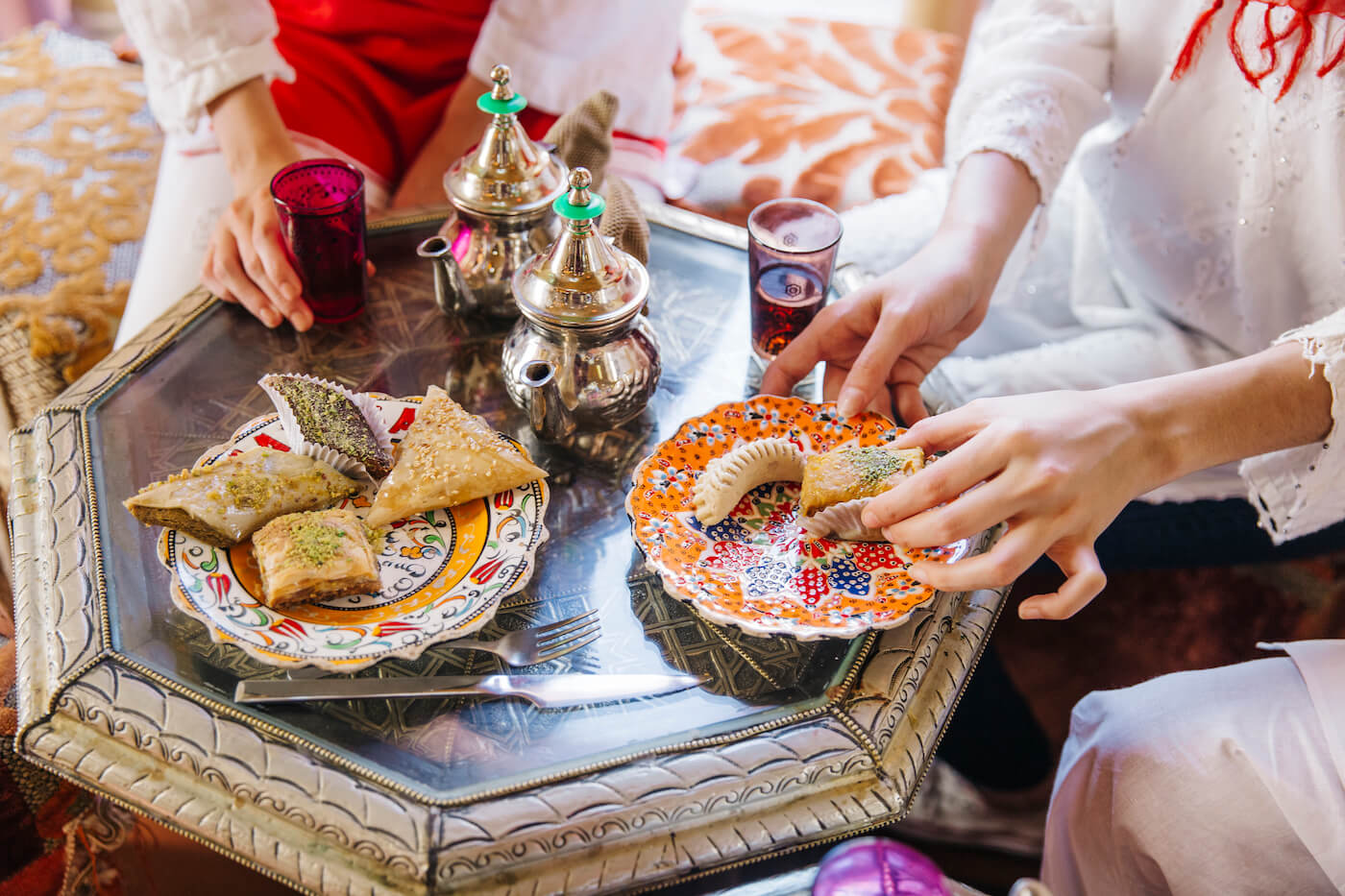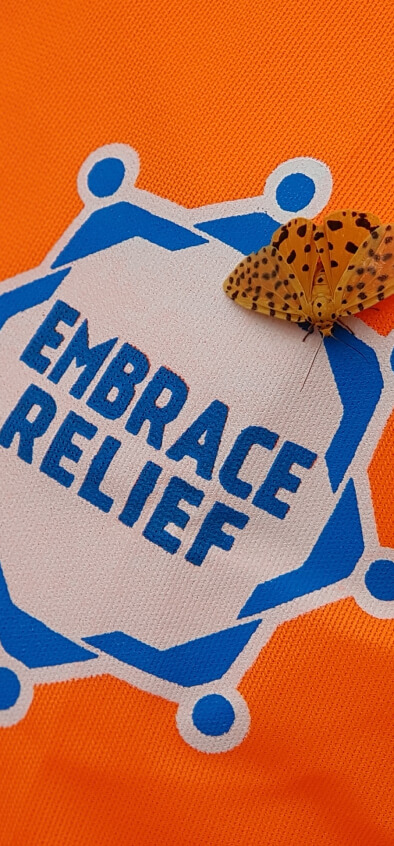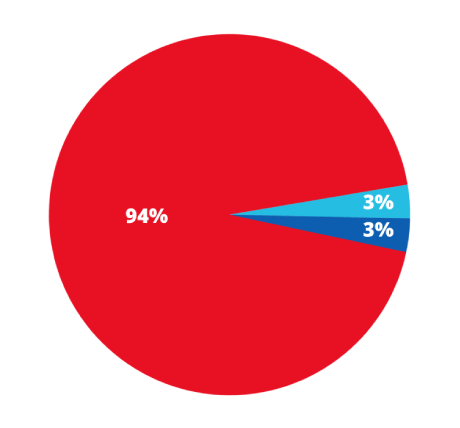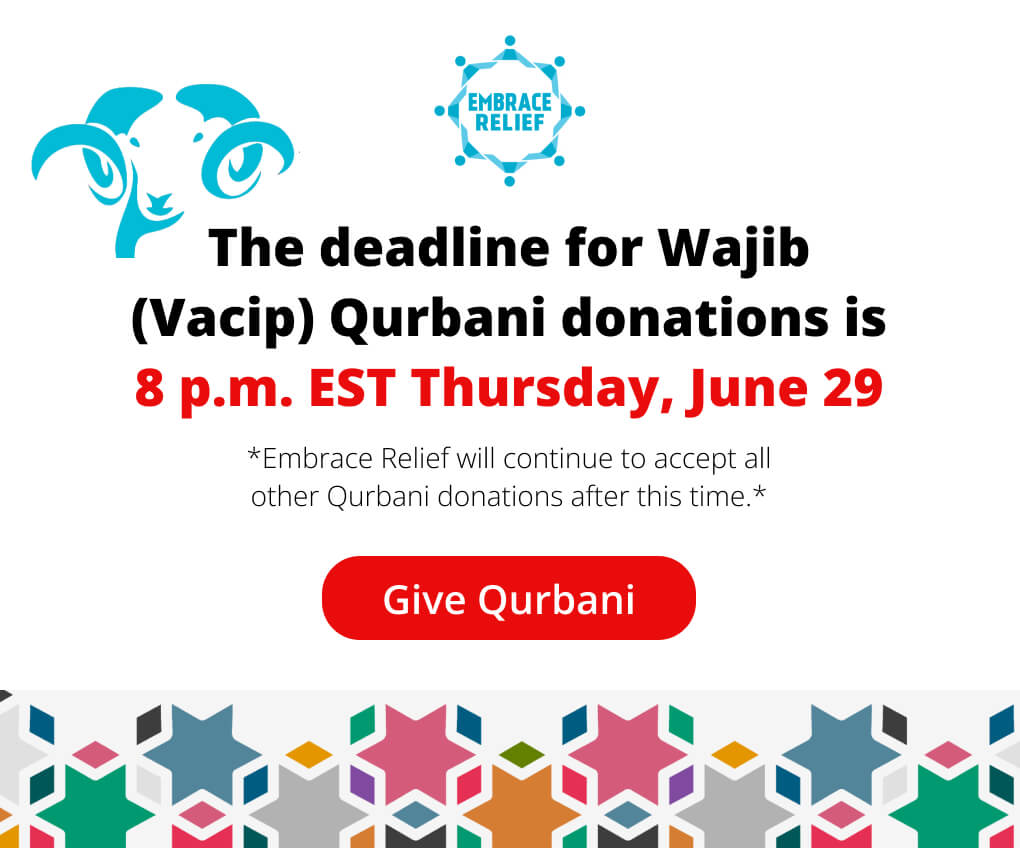Introduction:
Ramadan, the ninth month of the Islamic lunar calendar, is observed by millions of Muslims around the world as a period of fasting, prayer, reflection, and community. While the essence of Ramadan is universal, cultural traditions vary significantly across different regions, adding unique flavors to the observance of this sacred month. Embrace Relief invites you on a journey to explore these diverse practices and the unifying spirit of Ramadan, while also highlighting the importance of compassion and giving during this time.
Middle East: Lanterns and Fanous
In the heart of the Middle East, Ramadan is a time of spiritual reflection, communal gatherings, and vibrant celebrations. Among the most enchanting symbols of Ramadan in countries like Egypt are the “Fanous” lanterns. These aren’t just decorative items; they’re imbued with history and cultural significance, lighting up not just the physical spaces but also the hearts of those observing Ramadan.
Historical Significance
The tradition of Fanous goes back to the Fatimid Caliphate, when the Caliph would welcome the holy month by illuminating the streets and mosques with lanterns. This tradition has evolved over the centuries, but the essence remains the same, symbolizing hope, joy, and the light of faith that guides Muslims through the month of fasting.
Culinary Delights
The Iftar table in the Middle East is a lavish spread that reflects the region’s rich culinary heritage. Dates and water are the traditional starters, following the Prophet Muhammad’s (PBUH) sunnah. This is followed by a variety of dishes that cater to every palate:
- Lentil Soup: A staple at every Iftar table, lentil soup is not just nourishing but also a gentle way to prepare the stomach for the meal ahead.
- Mezze: An assortment of small dishes such as hummus, baba ganoush, and tabbouleh, mezze is a communal affair, promoting sharing and bonding.
- Grilled Meats: Succulent lamb, chicken, or beef kebabs and koftas, marinated with Middle Eastern spices, are a testament to the region’s love for hearty, flavorful dishes.
Community and Charity
Beyond the feasting, Ramadan in the Middle East is a time for generosity and giving back to the community. Mosques and charitable organizations set up iftar tents for the less fortunate, embodying the spirit of giving (Zakat) and community (Ummah) that are central to Ramadan. This practice not only feeds those in need but also brings together people from various socio-economic backgrounds, reinforcing the bonds of brotherhood and compassion.
Cultural Celebrations
The nights of Ramadan are alive with Taraweeh prayers, where the melodious recitation of the Quran echoes in mosques. Families and friends also gather for “Qatayef” making sessions, a sweet dumpling that is synonymous with Ramadan in the Middle East. Markets and neighborhoods are bustling with activity, as people shop for Eid, making the most of the extended evening hours.
In essence, Ramadan in the Middle East is a blend of deep spiritual practice, cultural richness, and communal harmony. The Fanous lanterns not only light up the streets but also symbolize the hope and joy that Ramadan brings to hearts, homes, and communities across the region.
South Asia: Iftar Bazaars and Chaand Raat
Ramadan in South Asia—encompassing Pakistan, India, and Bangladesh—transforms the region with its distinctive spiritual fervor and cultural vibrancy. This period is marked by an outpouring of devotion, communal harmony, and a celebration of traditions passed down through generations.
Iftar Bazaars: A Feast for the Senses
The Iftar bazaars of South Asia are a spectacle to behold. As the sun sets, streets come alive with stalls adorned with an array of delicacies that cater to the breaking of the fast. These bazaars are not just about food; they are a cultural experience, offering a glimpse into the region’s rich culinary diversity.
- Special Treats: Samosas, pakoras, and jalebis are among the quintessential snacks that people look forward to during Ramadan. These fried treats are balanced with healthier options like fruit chaats and chana chaat, ensuring a blend of taste and nutrition.
- Spices and Sweets: The aroma of spices fills the air, as shopkeepers display their finest blends for the preparation of Ramadan meals. Sweets play a significant role in South Asian Ramadan, with delicacies like sheer khurma and firni being staples during the month.
Chaand Raat: The Night of the Moon
Chaand Raat, the eve of Eid-ul-Fitr, holds a special place in the hearts of South Asians. This night is an embodiment of joy and preparation for the festivities to come. Streets and markets are crowded with shoppers buying clothes, accessories, and gifts for their loved ones.
- Cultural Significance: Chaand Raat is a celebration of the sighting of the moon, marking the end of Ramadan. It’s a time for family and friends to gather, apply henna, exchange sweets, and share the excitement for the next day’s celebrations.
- Community and Charity: Amidst the festivities, there’s a strong emphasis on Zakat and giving back to the community. Many people choose Chaand Raat as the moment to distribute Zakat among those in need, ensuring they too can celebrate Eid with joy and dignity.
Spiritual and Social Fabric
The spirit of Ramadan in South Asia is woven into the very fabric of its society. Mosques are filled with worshippers for the Taraweeh prayers, and homes resonate with Quran recitations, fostering a sense of peace and spirituality. The practice of Iftar brings families and communities together, strengthening bonds and reinforcing the essence of Ramadan as a time of reflection, gratitude, and unity.
Ramadan in South Asia is a testament to the region’s ability to blend tradition with spirituality, creating a unique and vibrant celebration of the holy month. The Iftar bazaars and Chaand Raat festivities highlight the cultural richness and communal solidarity that define Ramadan in this part of the world. As we celebrate these traditions, Embrace Relief reminds us of the importance of extending our support to those in need, ensuring everyone can partake in the blessings of Ramadan.
Southeast Asia: The Beauty of “Buka Puasa”
Ramadan in Southeast Asia is marked by its own unique set of traditions, with “Buka Puasa,” the Malay and Indonesian term for breaking the fast, at the heart of the celebration. This time of year transforms the region into a bustling, vibrant community, united in faith and festivity.
Communal Harmony and Generosity
In countries like Indonesia and Malaysia, Buka Puasa is much more than a meal; it’s a celebration of community and shared blessings. Mosques, community centers, and even corporate offices host large gatherings where people from different walks of life come together to break their fast. It’s a powerful display of unity and generosity, with everyone welcome to join, regardless of their social or economic status.
Culinary Traditions
The cuisine of Southeast Asia is as diverse as its people, and Ramadan showcases this culinary wealth in full glory. Special dishes are prepared with care to break the fast, each with its own significance and story.
- Rendang: Originating from Indonesia, this rich and tender coconut beef stew is a labor of love, often cooked for hours to achieve its deep flavors. It’s a celebratory dish, symbolizing joy and abundance.
- Ketupat: These rice cakes, wrapped in woven palm leaves, are a symbol of forgiveness and renewal, making them a staple during Ramadan and the Eid festivities that follow.
- Satay: Skewered and grilled meats served with spicy peanut sauce, satay is a favorite at Ramadan bazaars and family tables alike, embodying the communal spirit of the season.
Ramadan Bazaars
The Ramadan bazaars are a highlight in Southeast Asia, bustling with vendors selling a wide array of foods, sweets, and drinks specially prepared for Iftar. These markets are not just places to buy food; they’re cultural hubs where the senses are ignited by the aromas of spices, the colors of traditional garments, and the sounds of laughter and music. They epitomize the festive atmosphere of Ramadan, bringing communities closer through shared experiences and joy.
Spiritual Reflection and Renewal
Beyond the feasting and festivities, Ramadan in Southeast Asia is a time for spiritual reflection and renewal. The Tarawih prayers are attended with fervor, as mosques overflow with worshippers seeking spiritual closeness and peace. Many also engage in personal reflection and increased charitable activities, embodying the values of empathy, generosity, and community service.
The beauty of “Buka Puasa” in Southeast Asia lies not just in the delicious food and the grand gatherings but in the profound sense of community and shared humanity it fosters. It’s a time when the fast unites individuals in a collective expression of faith, gratitude, and compassion.
Africa: Street Feasts and Sadaqah
In Africa, the observance of Ramadan is imbued with a profound sense of community and generosity, reflecting the continent’s diverse cultural landscapes. From the bustling streets of Cairo to the serene landscapes of the Sahel, Ramadan is a time for communal solidarity, spiritual reflection, and acts of Sadaqah (charity), deeply rooted in the Islamic ethos of helping those less fortunate.
Community Gatherings and Feasts
Across Africa, the breaking of the fast transforms into communal celebrations that often extend into the streets. In countries like Morocco, long tables are set up in neighborhoods for the Iftar meal, inviting all to partake regardless of their means. This practice underscores the communal spirit of Ramadan, where sharing and caring are paramount.
Culinary Delights
African Ramadan cuisine showcases the continent’s rich culinary diversity, with each region offering its unique flavors and dishes.
- Harira in Morocco: This rich soup made with tomatoes, lentils, chickpeas, and lamb, seasoned with a blend of fragrant spices, is a staple at Iftar tables in Morocco, offering warmth and nourishment after the day’s fast.
- Ful medames in Egypt: A dish of slow-cooked fava beans seasoned with garlic, lemon, and olive oil, ful medames is a beloved Iftar staple in Egypt, often enjoyed with a side of fresh vegetables and pita bread.
- Sambusas in East Africa: Similar to samosas, these fried or baked pastry shells filled with spiced meat or vegetables are a popular Iftar snack across East Africa, from Somalia to Kenya, symbolizing the shared culinary heritage of the region.
Sadaqah and Community Support
The practice of Sadaqah is especially visible during Ramadan in Africa. Mosques and charitable organizations work tirelessly to distribute food packages and host Iftar meals for the needy, embodying the Quranic teachings of compassion and generosity. In many communities, individuals also take it upon themselves to provide for their neighbors, reinforcing the bonds of kinship and mutual support.
Spiritual Nights and Cultural Expressions
The nights of Ramadan are filled with spiritual and cultural expressions. From the Taraweeh prayers recited in mosques and homes to the celebration of Laylat al-Qadr, the “Night of Power,” the spiritual ambiance is palpable. Cultural traditions, such as storytelling and poetry recitals, also play a significant role in the Ramadan experience, passing on the rich Islamic heritage to younger generations.
Ramadan in Africa is a vivid illustration of faith in action, where the spiritual and the communal merge in beautiful expressions of devotion and generosity. The continent’s diverse traditions during this holy month remind us of the universal values of compassion, community, and care for the less fortunate that Ramadan embodies.
or the poor and travelers, ensuring that everyone has a place to break their fast.
Europe and North America: Multicultural Iftars and Community Outreach
In the melting pot of cultures that characterizes both Europe and North America, Ramadan takes on a uniquely multicultural dimension. Here, the observance of Ramadan not only serves as a period of spiritual reflection for Muslim communities but also as an opportunity for interfaith dialogue, cultural exchange, and community outreach. These regions exemplify how Ramadan can bridge differences and foster a deeper understanding among diverse populations.
Interfaith Iftars and Dialogue
One of the most heartening aspects of Ramadan in Europe and North America is the increasing number of interfaith Iftars and events aimed at promoting dialogue and understanding between Muslims and people of other faiths. Mosques, Islamic centers, and Muslim organizations frequently open their doors to neighbors of all backgrounds, offering a taste of Ramadan’s spirit and an insight into Islamic practices and values.
- Community Centers and Mosques become hubs of activity, hosting talks, exhibitions, and Q&A sessions about Islam and the significance of Ramadan, thereby demystifying the religion for many non-Muslims and correcting misconceptions.
Cultural Festivities and Educational Programs
Beyond religious observances, Ramadan in these regions is marked by cultural festivities that celebrate the rich heritage of the Muslim world. Educational programs in schools and community centers focus on teaching about Ramadan and the diversity within the Muslim community, fostering a sense of inclusivity and respect for cultural differences.
- Public Libraries and Schools may host book readings, craft sessions focused on Islamic art, and storytelling events featuring tales from Muslim lands, engaging children and adults alike in a cultural journey during Ramadan.
Community Service and Outreach
The spirit of giving (Zakat and Sadaqah) that is central to Ramadan finds expression in numerous community service projects and outreach efforts aimed at helping those in need, regardless of their faith. Food drives, charity fundraisers, and volunteer initiatives gain momentum during this month, embodying the Islamic ethos of compassion and generosity.
- Feeding the Homeless and Supporting Food Banks: Many Muslim communities organize efforts to feed the homeless or support local food banks, emphasizing that the blessings of Ramadan should be shared with all, especially those facing hardship.
Virtual Gatherings and Social Media
With the advent of digital platforms and social media, the way Ramadan is observed has also evolved. Virtual Iftars, online Quran study circles, and live-streamed Taraweeh prayers have become increasingly common, allowing for a sense of community even when physical gatherings are not possible.
- Online Platforms offer an alternative space for those who may be observing Ramadan alone or away from their families, ensuring that no one has to break their fast in isolation.
Ramadan in Europe and North America showcases the beauty of diversity and the power of community. It’s a time when the values of understanding, generosity, and compassion transcend cultural and religious boundaries, bringing people together in a shared human experience. These practices not only enrich the Ramadan experience for Muslims but also strengthen the social fabric of the diverse societies in which they live.
Supporting Those in Need
While we celebrate the rich tapestry of Ramadan traditions around the world, it’s crucial to remember the essence of this holy month is compassion and giving. Millions of people worldwide face hunger and hardship every day, not just during Ramadan. Embrace Relief works tirelessly to provide aid to those in need, from food packages to clean water projects. This Ramadan, we invite you to join us in making a difference. Your donations to our International Hunger Relief program can help ensure that everyone has the chance to observe Ramadan with dignity and joy.
Visit our International Hunger Relief: Ramadan page to learn how you can contribute to our efforts and help bring relief to those in need during this blessed month.
Conclusion:
Ramadan unites us in fasting and faith, but it also celebrates our diversity through unique cultural traditions. By supporting one another and extending our generosity beyond our immediate communities, we embody the true spirit of Ramadan. Let’s embrace this time of reflection and giving, making a positive impact in the lives of those less fortunate.
